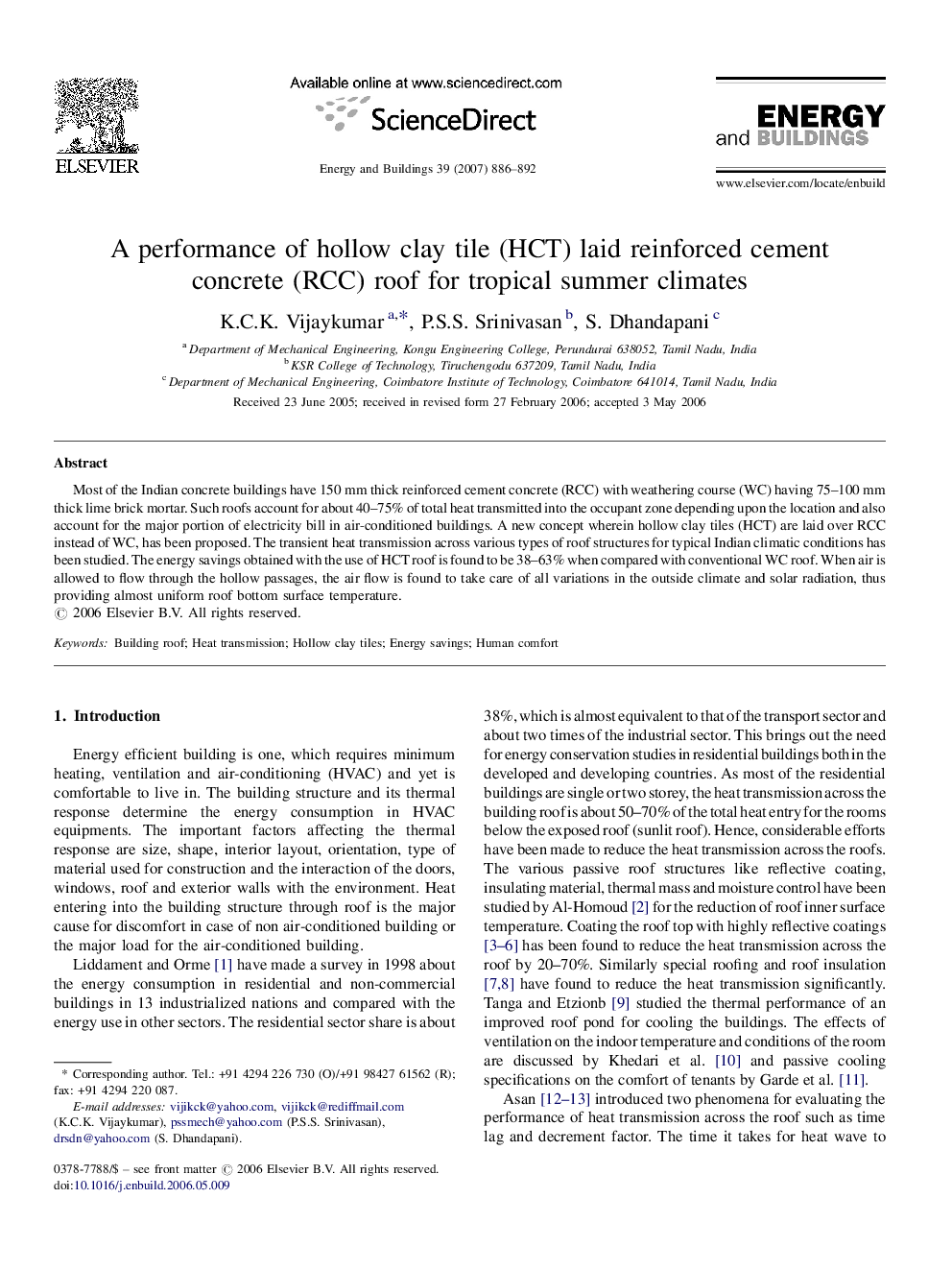| Article ID | Journal | Published Year | Pages | File Type |
|---|---|---|---|---|
| 265298 | Energy and Buildings | 2007 | 7 Pages |
Most of the Indian concrete buildings have 150 mm thick reinforced cement concrete (RCC) with weathering course (WC) having 75–100 mm thick lime brick mortar. Such roofs account for about 40–75% of total heat transmitted into the occupant zone depending upon the location and also account for the major portion of electricity bill in air-conditioned buildings. A new concept wherein hollow clay tiles (HCT) are laid over RCC instead of WC, has been proposed. The transient heat transmission across various types of roof structures for typical Indian climatic conditions has been studied. The energy savings obtained with the use of HCT roof is found to be 38–63% when compared with conventional WC roof. When air is allowed to flow through the hollow passages, the air flow is found to take care of all variations in the outside climate and solar radiation, thus providing almost uniform roof bottom surface temperature.
